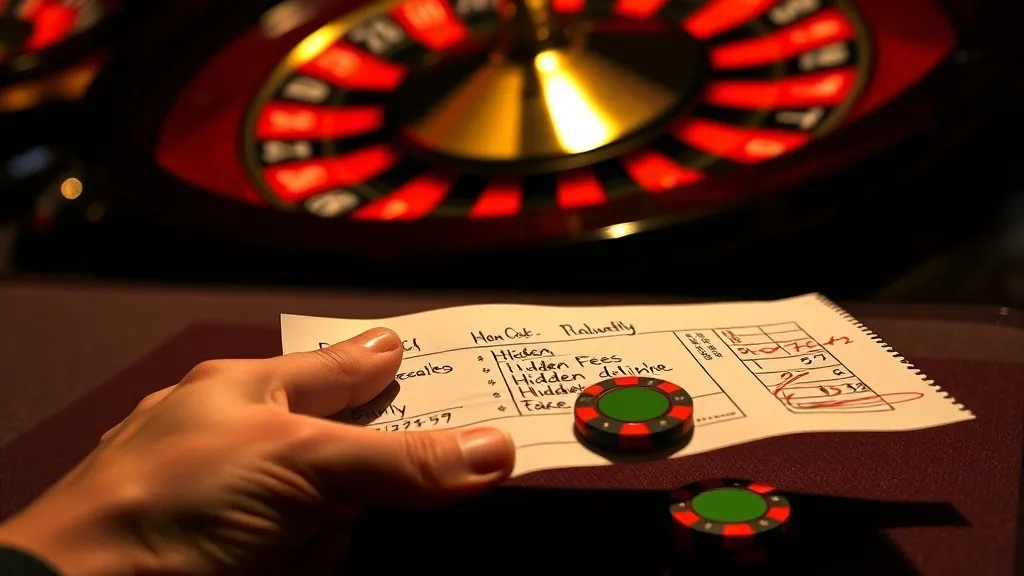The Art of the Bluff: When to Play Your Poker Face and When to Show It
Alright, let’s chat about one of the most thrilling aspects of poker: the bluff. It’s like that sweet spot in a romantic comedy where the two leads almost kiss but then totally mess it up. You know it’s coming, but the suspense is half the fun! Knowing when to bluff and when to keep a straight face can seriously make or break your game.
First up, let’s get one thing straight: bluffing isn’t just about pretending you have the best hand. It’s all about reading the room—kinda like figuring out if your buddy is joking about that terrible haircut or if they’re actually serious. You gotta gauge your opponents. If they seem timid, maybe your bluff will fly. If they’re bold and aggressive, though, you might wanna think twice before trying to outsmart them.
So, when should you put on your poker face? Well, if you’ve got a hand that’s not great but you think your opponents are even worse, that’s your cue! You can throw out a big bet and see if they fold. Just remember, there’s a fine line between confident and reckless. If you go all in with a weak hand and get called, it’s like taking your last slice of pizza and realizing someone just dropped it on the floor. Total disaster.
On the flip side, there are times when showing your hand—literally—can be beneficial. If you’ve been playing tight and suddenly show a strong hand, it can establish your credibility. It’s kinda like when you finally let your friends see your dance moves. They’ll either be amazed or regret ever asking you for a dance-off.
- Timing is key: Bluff at the right moment, when the table dynamics are in your favor.
- Body language: Watch for tells in others, but also be aware of your own!
- Practice makes perfect: The more you play, the better you’ll get at knowing when to bluff or show strength.
Ultimately, it’s about finding that balance. Mastering the art of the bluff can elevate your game from casual to pro faster than you can say “all in.” Just remember, even the best players get it wrong sometimes. So, keep it fun, and don’t take it too seriously—after all, it’s just a game, right?
Reading the Room: Deciphering Your Opponents Like a Pro
Alright, let’s dive into the nitty-gritty of reading your opponents at the poker table. It’s not just about the cards you hold; it’s about the players around you. Seriously, if you can get a read on what they’re thinking, you’re halfway to winning. Think of it like a game of chess, but with a lot more chips and a lot less pressure to look smart.
First off, pay attention to their body language. Sure, we’re all supposed to be poker-faced and all, but let’s be real—everyone slips up. A slight twitch, a nervous laugh, or that little smirk when they look at their cards can tell you loads. For instance, if someone avoids eye contact after the flop, they might be bluffing. Or maybe they just can’t handle the pressure of your impressive poker face! Either way, take notes.
- The Talkative Player: If they’re chatting away about their last trip or that amazing sandwich they had for lunch, they might be trying to distract you. Keep an eye on their betting patterns; they could be hiding a strong hand behind that friendly banter.
- The Silent Type: These folks can be tricky. If they’re quiet and focused, they might be plotting your demise with a killer hand. Or they just really don’t want to talk to you. Who knows?
- The Aggressive Bluffer: You know the type—betting big with a smile that says, “I’m definitely bluffing, but I hope you buy it.” Don’t be fooled! Sometimes, the louder they are, the weaker their hand.
Next, you gotta consider their betting behavior. Are they raising every hand? Or are they folding like a lawn chair in a windstorm? Patterns can reveal a lot. If you notice someone consistently betting high with marginal cards, it might be time for you to call their bluff. But be careful; overconfidence can lead you to the poor house faster than you can say “all in.”
And here’s a little personal tip: always trust your gut. Yeah, it sounds cliché, but if you feel something’s off, it probably is. Your instincts can be your best ally in the game. I can’t tell you how many times I ignored that little voice in my head, only to regret it later. Poker’s as much about psychology as it is about the cards, so don’t underestimate the power of intuition.
In the end, reading your opponents is like watching a movie with a twist ending—you wanna figure it out before the credits roll. So, keep your eyes peeled, stay aware, and remember: the best poker players are part mind reader, part card shark. Now go out there and show them who’s boss!
Bankroll Management: Your Secret Weapon Against the Odds
Alright, let’s chat about something that’s super important but doesn’t always get the spotlight it deserves: bankroll management. I mean, you could be the best player at the table, but if you don’t manage your money right, you might as well be throwing chips into the wind. Seriously, it’s like going to a buffet with a stomach bug—just not a good idea.
So, what’s the deal with bankroll management? In simple terms, it’s about knowing how much money you have to play with and sticking to it. It’s like having a budget for your pizza nights—gotta know when to say “no more pepperoni.”
- Set a Budget: First off, figure out how much money you can afford to lose. This isn’t your life savings, folks. It’s just the cash you’re willing to part with for some fun. Think of it as your entertainment budget for the month. If you lose it all, you can still afford to eat—hopefully!
- Choose Your Stakes Wisely: Don’t jump into those high-stakes tables just because you had a great day. Stick to games where you’re comfortable. It’s like wearing your favorite old t-shirt versus trying to squeeze into that fancy shirt you’ve outgrown. Be real with yourself.
- Keep Track: Seriously, keep a record of your wins and losses. It’s super helpful to see where you stand. Plus, it’s a great way to remind yourself that you’re not as terrible at poker as you think… unless those losses are piling up, then maybe it’s time for a break!
Now, I know what you’re thinking: “But I’ve got this feeling! I’m on a hot streak!” And hey, I get it. I’ve been there. But trust me, the poker gods can turn on you in a heartbeat. One bad hand can wipe out a week’s worth of winnings. It’s like that one time I thought I could eat an entire large pizza by myself. Spoiler alert: I regretted it.
In the end, bankroll management is your best friend. It keeps you in the game longer and helps you make better decisions. So, treat it like that trusty sidekick in a buddy movie—always there to help you out when you’re about to make a stupid move. Stick to your plan, and you’ll find that poker can be a lot more enjoyable (and less stressful) when you know you’re playing within your limits.
The Long Game: Strategies for Sustaining Your Winning Streak
Alright, so you’ve hit a nice little winning streak at the poker table. Congrats! But before you start dreaming about your future mansion and that fancy car, let’s chat about how to keep those wins coming. It’s all about playing the long game, my friend.
First off, don’t let that winning feeling get to your head. Seriously, I’ve seen too many players ride the high from a few good hands straight into a disaster. Stay grounded. Remember, poker isn’t just about the cards you’re dealt; it’s about how you play them. So, let’s dive into some strategies that can help you maintain that momentum.
- Bankroll Management: This one’s huge. Treat your bankroll like a sacred treasure. Set aside a certain amount for poker and don’t dip into it for your late-night pizza runs. Keep it separate, and you’ll be less likely to make impulsive decisions when the cards aren’t in your favor.
- Stay Adaptable: The game is always changing, and so are your opponents. If you find yourself playing against a bunch of tight players, loosen up your game a bit. On the flip side, if they’re all wild and crazy, tighten it up and play smart. Adaptability is key!
- Take Breaks: Seriously, step away from the table every once in a while. I know it sounds counterintuitive, but sometimes you need to clear your head. Whether you grab a snack, take a walk, or binge-watch cat videos (no judgment here), a break can help you return with a fresh perspective.
- Reflect on Your Games: After a session, take a moment to think about what went well and what didn’t. Maybe you made a killer bluff or misread a player. Learning from your mistakes and victories is how you level up in this game.
- Stay Emotionally Balanced: Don’t let your emotions dictate your decisions. If you’re on tilt, it’s time to step away. I’ve been there, and trust me, nothing good comes from playing when you’re frustrated or overly excited.
At the end of the day, poker is a marathon, not a sprint. Focus on building your skills consistently, and don’t just chase the quick wins. Keep your head in the game, stay humble, and let your winning streak become a part of your long-term strategy.
So, what’s the takeaway? Play smart, stay adaptable, and remember: it’s not just about the cards; it’s about the player behind them. Happy playing!



